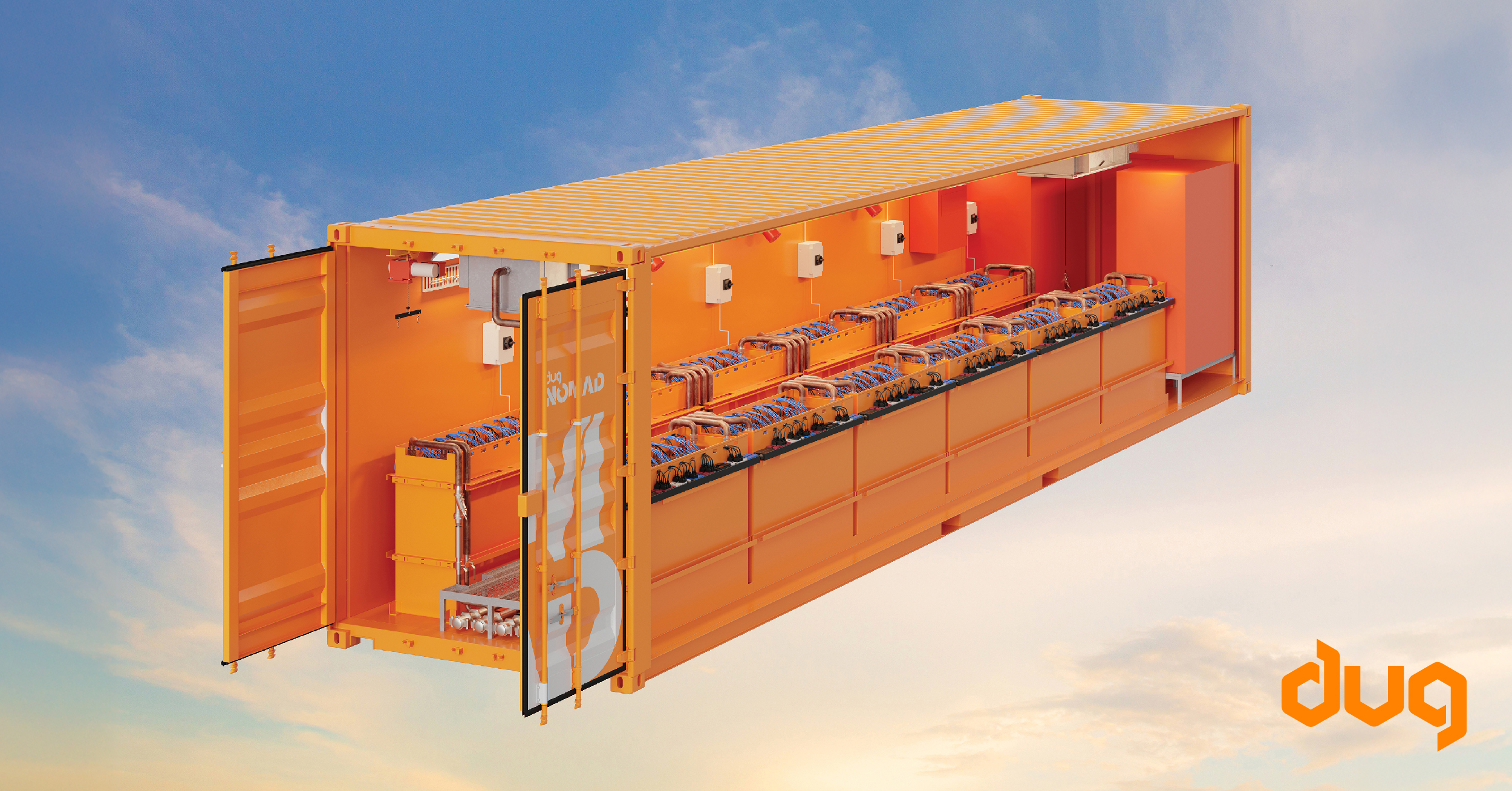HPC Wire News June 2021 (sponsored content):
Perth-headquartered DUG Technology announced plans last month to build the world’s first carbon-free high-performance computing (HPC) campus in regional Western Australia, powered by renewable energy.
The initial six megawatt data hall would boast a computing capacity in excess of 200 petaflops – adding to the company’s four existing data centres in Perth, Houston, London and Kuala Lumpur. The Geraldton campus has plans for expansion to multi-exaflop scale once the proposed ten data halls are commissioned. The company says that compute will be populated, and additional data halls constructed, as demand grows.
Taking advantage of the high availability and accessibility of renewable energy surrounding Geraldton, the supercomputing facility will ultimately be entirely powered by wind and solar. An onsite hydrogen battery system is also being investigated as part of the project.
In their recent press release, DUG states that the Geraldton campus will be used to turbocharge scientific research and big data analysis for their diverse client base across the technology, education and resource sectors, while concurrently giving them a significant boost in achieving their carbon-reduction goals and meet environmental, social, and governance (ESG) requirements.
The company’s green credentials give them a considerable head start to achieve their carbon-free HPC goals. DUG has already spearheaded green HPC with its immersion-cooling technology, DUG Cool, which was recently awarded a US patent grant. The award-winning solution reduces power consumption by up to 51%, and increases the life and efficiency of computer hardware, making their data centres some of the greenest and most efficient on Earth. In fact, DUG was awarded Enterprise Data Centre of the Year in 2019 for this innovative, green technology.
This is great news for industries seeking to decrease their carbon emissions. The societal impact of an organisation’s carbon footprint is a growing and increasingly urgent concern. The International Centre for Radio Astronomy Research (ICRAR) and UWA, recently published a paper in Nature Astronomy, citing that the most significant contributor to ICRAR’s carbon footprint was its reliance on supercomputers to create cosmological simulations and process enormous volumes of data from telescopes. The paper revealed that the work-based emissions of an average astronomer are 40% higher than the average Australian, and five times the global average.
However, in ICRAR’s Sustainability Statement, released ahead of the publication of the paper, the power-saving benefits of the DUG Cool system, were highlighted as a significant step towards reducing their carbon footprint.
DUG’s planned carbon-free data centre will be strategically located close to the Square Kilometre Array (SKA), an unprecedented multi-national effort by governments and universities to build the largest radio telescope ever made. Researchers involved in the project are peering back to the moments right after the Big Bang, over 13 billion years ago.
With the exponential growth in the global demand for HPC, it’s exciting to see a company building innovative, world-leading, green HPC solutions, and investing in a carbon-free future for us all.




































